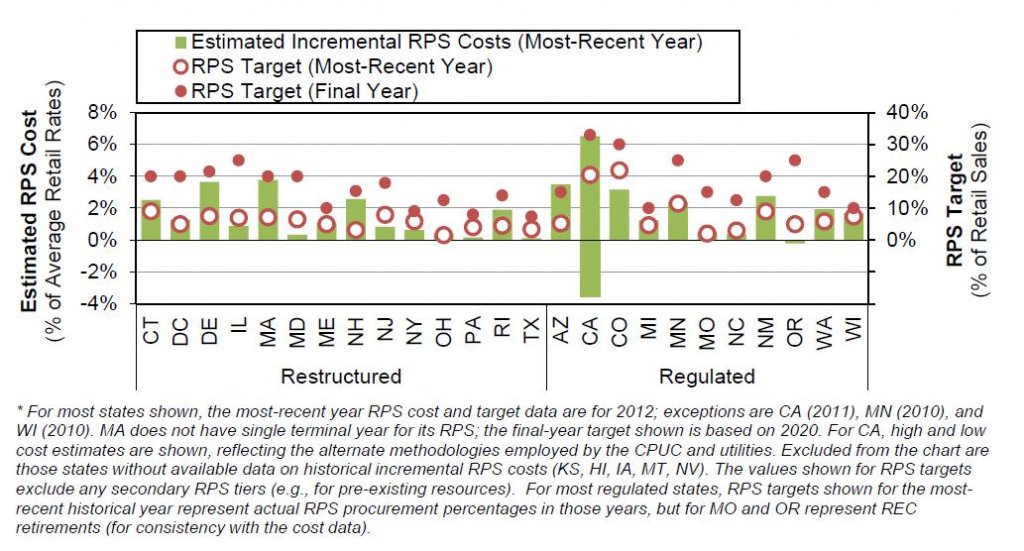The report A Survey of State-Level Cost and Benefit Estimates of Renewable Portfolio Standards has been authored and released by Berkeley Lab and the National Renewable Energy Laboratory. Renewable portfolio standard (RPS) policies are in place in more than half of all U.S. states and have played a critical role in driving renewable energy deployment over the past decade. In many states, however, fierce debates have recently arisen regarding the cost of RPS policies, and proposals have been introduced to repeal, reduce, or freeze existing requirements.
This report seeks to inform these debates by summarizing available data on the costs and benefits of RPS policies to-date and by highlighting key methodological issues that must be considered.  The report draws upon a variety of data sources, including estimates developed by utilities and public utility commissions (PUCs) as well renewable energy certificate pricing, to summarize the net (or incremental ) costs incurred by utilities to comply with RPS requirements.
The report draws upon a variety of data sources, including estimates developed by utilities and public utility commissions (PUCs) as well renewable energy certificate pricing, to summarize the net (or incremental ) costs incurred by utilities to comply with RPS requirements.
The report also surveys recent studies that have assessed the magnitude of potential broader societal benefits (though for a variety of reasons, those benefits estimates cannot be directly compared to RPS compliance costs).
The study’s key findings include:
• Among the 24 states for which the requisite data were available, estimated RPS compliance costs over the 2010 to 2012 period were equivalent to, on average, roughly 1 of retail electricity rates, though substantial variation exists across states and years.
• Expressed in terms of the incremental (or above-market ) cost per unit of renewable generation, average RPS compliance costs during 2010 to 2012 ranged from –4/MWh (i.e., a net savings) to $44/MWh across states.
• Methods for estimating RPS compliance costs vary considerably among utilities and states, though a number of states are in the process of refining and standardizing their methods.
• Utilities in eight states assess surcharges on customer bills to recoup RPS compliance costs, which in 2012, ranged from about $0.50/month to $4.00/month for average residential customers.
• Cost containment mechanisms incorporated into current RPS policies will limit future compliance costs, in the worst case, to no more than five of average retail rates in many states and to 10 or less in most others.
• Although typically not considered within utilities’ estimates of net compliance costs, a number of states have separately estimated the value of RPS benefits associated with avoided emissions (ranging from $4 to 23/MWh of renewable generation), economic development ($22 to 30/MWh), and/or wholesale electricity price suppression ($2 to 50/MWh).
Important caveats and context for the findings cited above are explained fully within the report, which can be freely downloaded at: http://emp.lbl.gov/publications/survey-state-level-cost-and-benefit-estimates-renewable-portfolio-standards Findings from the report will also be presented via a free webinar on June 10th at 9:00 am Pacific Daylight Time. Registration for the webinar is available here: https://www3.gotomeeting.com/register/475292614 We appreciate the funding support of the U.S. Department of Energy’s Office of Energy Efficiency and Renewable Energy (Strategic Programs Office and Solar Energy Technologies Office).
Lawrence Berkeley National Laboratory http://emp.lbl.gov/publications/survey-state-level-cost-and-benefit-estimates-renewable-portfolio-standards
Filed Under: News, Policy




